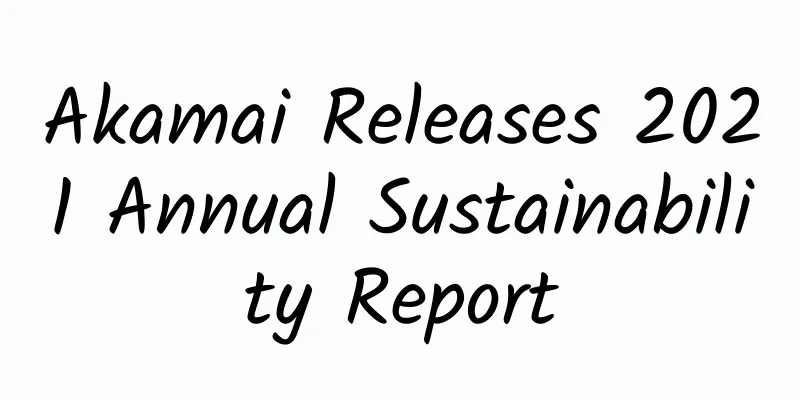How can operators innovate traffic management models?

|
Traffic is an important carrier in the Internet+ era, and all aspects of society cannot do without traffic. The large-scale growth of traffic services and the diversification of user needs require operators' pipelines to be more intelligent and open. It is an inevitable trend for operators to follow the development rules of mobile Internet and change their role as "plumbers" in the mobile Internet era. Current Status of Telecom Operators’ Traffic Management Currently, telecom operators mainly manage traffic in the following ways. First, use social means to stimulate traffic growth. The development of mobile Internet is driving changes in people's traditional living habits, and traffic sharing in the social field is promoting the growth of data traffic consumption. From traditional red envelopes to electronic red envelopes, operators' traffic red envelope business is mainly divided into two ways. One is to activate the red envelopes through their own platforms and then distribute them through social platforms. The second is to launch traffic red envelope products through cooperation with WeChat. In addition, operator clients and WeChat cooperation platforms will launch free traffic or traffic lottery activities during holidays.
Secondly, establish a traffic trading platform to activate the remaining traffic. Based on the 1+N business philosophy, operators have built a series of trading platforms in the field of traffic management, such as Traffic Bank, Traffic Treasure, Love Traffic, and Traffic Wallet. Through similar platforms, they connect their accumulated massive customer resources with e-commerce, game companies, and offline enterprises such as catering, aviation, clothing, banking, and communications. For users, on such platforms, they can convert surplus traffic, merchant points, etc. into traffic coins, and can transfer or sell the traffic coins to any user of the platform, thereby breaking through network traffic restrictions and enjoying the operator's non-zero traffic service. This type of platform expands traffic consumption scenarios by earning traffic, socializing, and exchanging small amounts, enhancing the combination of content and traffic, realizing the circulation functions of currency such as traffic gifting, payment, trading, and point exchange, monetizing traffic, and thus exploring the added value of traffic circulation. For example, China Telecom's traffic treasure promotes the brands of its partner companies, which is a good example of the marketing value brought by traffic circulation. Scenario-based business traffic monetization At present, the cooperation between domestic operators and Internet companies mainly adopts two methods: backward traffic management and directional traffic management to directly monetize traffic. Backward traffic management refers to the Internet company paying the traffic fees, and users can use the content provided by the Internet company without paying the traffic fees. For example, the cooperation between the three major operators and Snail Free Store will ensure that the mobile traffic fees incurred by users when downloading or playing mobile games in the Free Store will be paid to the operator by Snail Mobile, the operator of the Free Store, and users do not need to bear the relevant traffic fees. Targeted traffic management refers to the cooperation between operators and Internet companies such as music and video that have large average household traffic and strong user willingness to pay, to launch a series of music traffic packages and video traffic packages. Through low-cost targeted traffic packages, users are encouraged to use heavy traffic services such as video websites and music websites. The fees are first collected by the operators and then shared with the partners in proportion. In order to promote their own applications, some Internet companies cooperate with operators to carry out backward or directional traffic management, that is, "free for users, merchants pay the bill". Most of these companies use application stores as platforms, and achieve the goals of attracting new users, increasing user stickiness, and stimulating user use through various methods such as "signing in to get free traffic" and setting up "free traffic download areas". Internet companies such as video and shopping websites use traffic to promote the development of their main business. Such companies generally attract high-value new users through traffic management, and also increase the activity of existing users, thereby promoting business development. Financial companies such as banks and securities cultivate users' habits of using electronic channels by giving away traffic. Urgent need to innovate traffic management model As traffic consumption demands continue to change in the mobile Internet era, telecom operators also need to innovate their traffic management models in line with the times. On the one hand, due to the intensified competition in the surplus traffic market, telecom operators should try to further open up the traffic trading platform. The increase in user demand requires operators to make their pipelines more intelligent and open. At present, the domestic open platform and application distribution field are controlled by large Internet companies such as 360 and Baidu. In order to avoid being piped, the three basic operators should combine their own resources and channel advantages, unify the billing model and traffic unit price settlement method, try to further open up the traffic trading platform, thoroughly activate the surplus traffic, occupy an absolute dominant position in the industry chain, and promote the healthy development of the traffic market. On the other hand, the increasing dependence on Internet companies should strengthen their own advantages and integrate with superior products. Although cooperation with Internet companies with heavy traffic business and high user activity can bring rapid growth in users and business volume to operators, it also makes operators face two major problems: first, the increasing dependence on Internet companies will make their own business revenue growth subject to Internet companies; second, the implementation of directional traffic technology solutions and backward traffic technology solutions, although it only involves the adjustment of billing strategies, there are certain policy risks. Traffic management should focus on the construction of the ecosystem and the coordination of the industry. At present, the value of the entire information and communication industry is accelerating from the telecommunications industry to the Internet industry. In the ecosystem formed with operators as the core, operators and Internet companies are interdependent and mutually reinforcing, and there is a lot of room for cooperation between the two sides. While operators further open up cooperation paths to Internet companies, they should firmly grasp their advantages as information channels in terms of business cooperation model strategies, and then integrate the advantageous products of Internet companies to comprehensively improve their own service capabilities, such as targeted reductions and exemptions, and using free traffic packages to bind industry customers to further integrate their businesses. In addition, under the impact of new services, user needs are constantly changing, and operators should improve user perception in combination with different scenarios. With the continuous emergence of new terminals, the continuous development of video services, and the beginning of virtual reality (VR), with the rapid growth of traffic, both consumer demand and industry development have put forward higher requirements for bandwidth speed. This requires operators to continuously optimize the network, improve network utilization, take a series of measures to reduce operating costs, and meet the needs of different user groups through new tariff models. Traffic management should also be combined with different scenarios and applications, take user needs as the direction of efforts, and continuously improve user experience. It is worth mentioning that the key to innovative development of traffic lies in talent. Operators should accelerate their own transformation and continuously improve their innovation capabilities. First, they should try to reduce their reliance on the "sea of people" marketing model. Secondly, they should focus on optimizing and adjusting the employee ratio, reduce traditional business personnel, and supplement high-quality talents such as mobile Internet talents and big data talents. Thirdly, based on the actual needs of internal operations of the enterprise, they should select potential reserve talents, increase training opportunities, and train existing personnel into talents needed for enterprise transformation and development. (The author works at the Industry and Planning Institute of the China Academy of Information and Communications Technology, mainly engaged in industrial planning and policy research in the telecommunications industry.) |
>>: Are you familiar with the all-optical networks that are being deployed one after another?
Recommend
Let ChatGPT tell you how to build a lossless network that supports ChatGPT computing power
With the acceleration of digital transformation o...
Wind River Wins Two Awards at 2017 SDN/NFV World Summit
At the 2017 SDN/NFV World Summit hosted by Layer1...
5 false truths about 5G mobile phones, don't be fooled anymore
[[360004]] Although some things are real, they ar...
V5.NET launches new cloud servers with 20% discount starting from 20 yuan/month, with optional data centers in Hong Kong/Korea/Germany/Netherlands
V5 Server (V5.NET) previously mainly provided ind...
Strategy Analytics: 5G continues to grow rapidly despite component shortages
On June 2, according to the latest report release...
Compared with the insecure HTTP, how does HTTPS ensure network communication security?
HTTP is an excellent communication protocol, but ...
Huawei Telnet and Stelnet login methods that make people dizzy
I am Zhao Jiexu, a lecturer at 51CTO Academy. On ...
MWC2023 China Telecom-Huawei Cloud Network Core Capabilities Innovation Achievements Global Conference Held
On February 28, the MWC2023 China Telecom-Huawei ...
ZJI: 520 yuan/month Hong Kong server-2*E5-2630L/32GB/480G SSD/30M bandwidth/2IP
ZJI has released a special promotional dedicated ...
Juniper CEO: The strategy driving Juniper's general direction is cloud
Juniper announced its first quarter 2017 revenue ...
Year-end review: 2020 network communication "three major" keywords
In 2020, the COVID-19 pandemic spread wildly arou...
Accelerating new infrastructure construction: Single-wavelength 200G backbone network is about to emerge, how far is 400G?
While the new infrastructure is accelerating the ...
VMISS 30% off from $2.6/month, Hong Kong/Korea/Los Angeles/Japan IIJ available
VMISS is a foreign hosting service provider estab...
WeChat tests voice progress bar function, netizens: finally it's here
The video progress bar was once added by Tencent ...
Don’t worry anymore! Teach you how to quickly locate Eth-Trunk faults and easily solve network problems!
1. How to locate the problem that an Eth-Trunk in...









